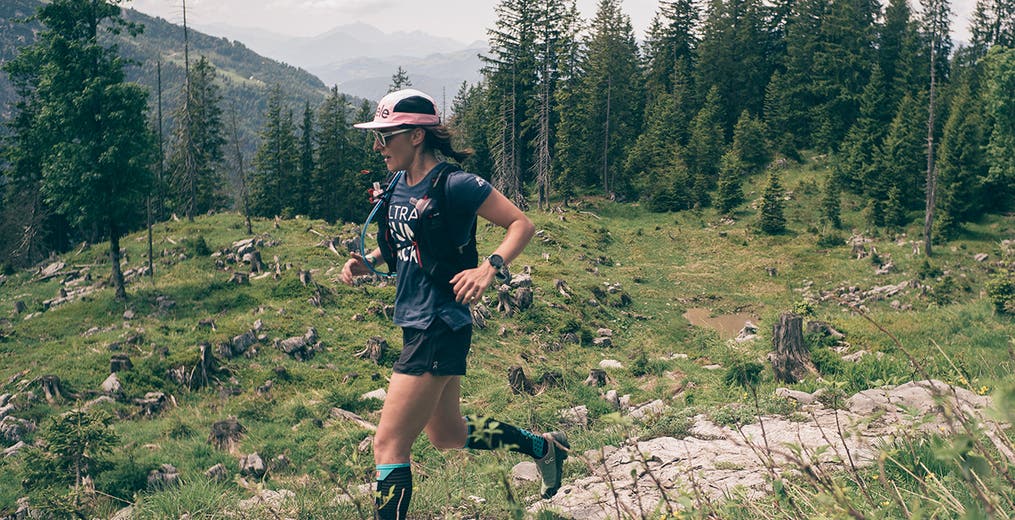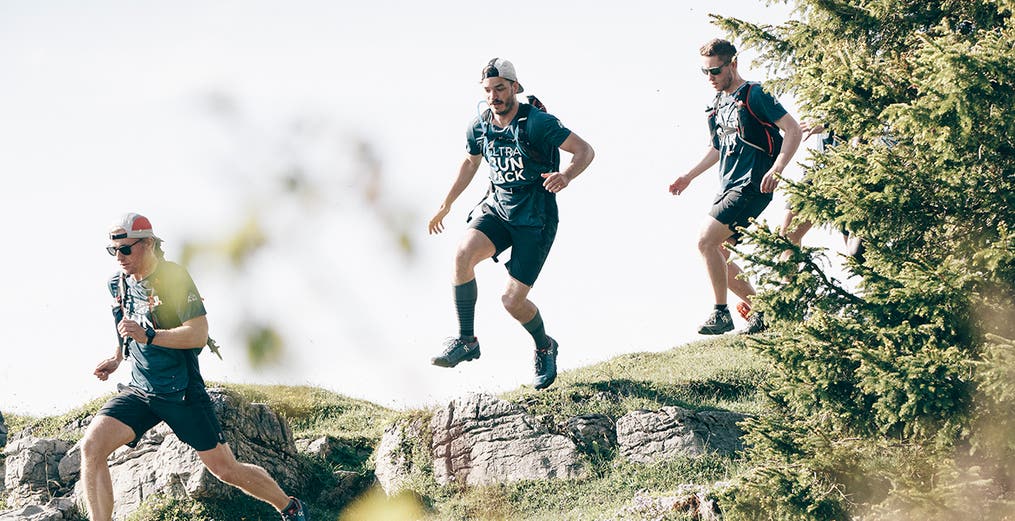We’ve evolved into a badass, thrill-seeking generation of runners. Extreme sports are increasingly becoming the norm and more and more people are seeking a tougher challenge to get that sought after adrenaline rush. It’s become clear that long, monotonous road running just doesn’t do it for the avid runner anymore. It’s the excitement and thrill of going off road that’s led to a climb in athletes hitting the trails. But what is it that makes a strong trail runner and how can we best prepare for such a bumpy ride? Here we discuss everything from the mental and physical benefits of trail running to technique and training tips from the pros.
First of all, there’s the mental benefits of running in the nature. Studies show that exposure to nature not only increases creativity and reduces stress, but may also lower levels of Interleukin-6, a harmful molecule associated with inflammation. The emotion you experience when you are in awe whilst running in the nature leaves you feeling more connected to the universe and can switch off your stress response, therefore reducing inflammation. Mentally, you feel more energized, revitalized and engaged. Trail running expands your mind. It has that escape factor where you are forced to switch off from everything and be 100% present in the moment. Take our word for it: getting lost along forest paths, exploring mountain trails or flying over rocks on a steep downhill track, is an experience like no other. It takes the feeling of freedom and being alive that we experience from running to whole other level.
Physically, the reasons to start trail running are endless. Many say their body feels happier on the trails. This could have something to do with the softer surface and an easy trail run can even aid recovery after a hard workout. It’s also a reason why many older runners take up trail running, as impact when running on soft trails doesn’t cause as much pain in the joints. Also, things like changes in elevation, obstacles - such as roots, rocks and potholes - as well as sharp bends and turns, result in a more balanced and holistically trained athlete. Trail running also helps develop your natural sense of pace and therefore you are more likely to run based on feel, rather than what your tracking watch says.
Feeling motivated AF after reading that and can’t wait to hit the trails? We thought so! But before you do, remember that there’s a reason why trail-running is considered an extreme sport. First of all, don’t expect to set a new PB. During a real trail run, you’ll be up against elevation and difficult terrain, which requires a lot more effort, concentration, strength and stability. So how do you best prepare for the trails you ask? Here’s what our group of experienced trail runners had to say:

#1: Train hip mobility, ankle stability and pillar strength
Due to the rough, uneven terrain, a trail runner's body absorbs a huge amount of force. That’s why a certain amount of strength and stability is required in the ankles to accept this force and prevent injuries such as sprains, fractures or even breaks. There are a number of simple but effective ways to improve strength and stability in your ankles. 1) Performing bodyweight exercises with bare feet. 2) Brushing your teeth whilst standing on one leg. 3) Using a resistance band, loop one end around your foot and hold the other end in both hands. Then, pull the foot back as far as possible and hold for 3 secs, next extend the toes as far forwards as possible and hold for a further 3 secs, repeating 15-16 times on each foot. Due to the many twists, turns and obstacles encountered on a trail, runners require pillar strength. The pillar includes the shoulders, torso, core as well as mobility in the hips and gives us a center axis from which to move. For more information on shoulder and upper body training, hip mobility and core strength as well as some effective exercises that will improve your trail running abilities, check out our other articles on the blog.
#2: You’ll need your hands and arms
A powerful arm swing forward and back will help drive your body uphill and also plays an important role if you want to run downhill faster. You might feel like you look like an idiot doing it but to keep your balance going downhill, spread your arms out to the side and flap them slightly. Both your hands and a powerful grip strength will come in useful for grabbing rocks and branches if you need to climb or hold onto something for balance.
#3: Never look ahead and never look directly at your feet
Trail running is all about knowing where to place your feet. That’s why your gaze should always be a few feet in front of you so that you can scan the path and tell your feet where to go. It’s also worth working on your reflexes and finding out how to improving your reaction time.

#4: Get to know when to walk and when to run
At a certain point it’s actually less efficient running than walking, both in terms of speed and energy consumption. This differs from runner to runner and knowing when to walk rather than run uphill comes with experience. If you do feel as though you’d be better off walking, lean into the hill, therefore lowering your centre of gravity. Using your hands, push down on your thighs to drive your legs.